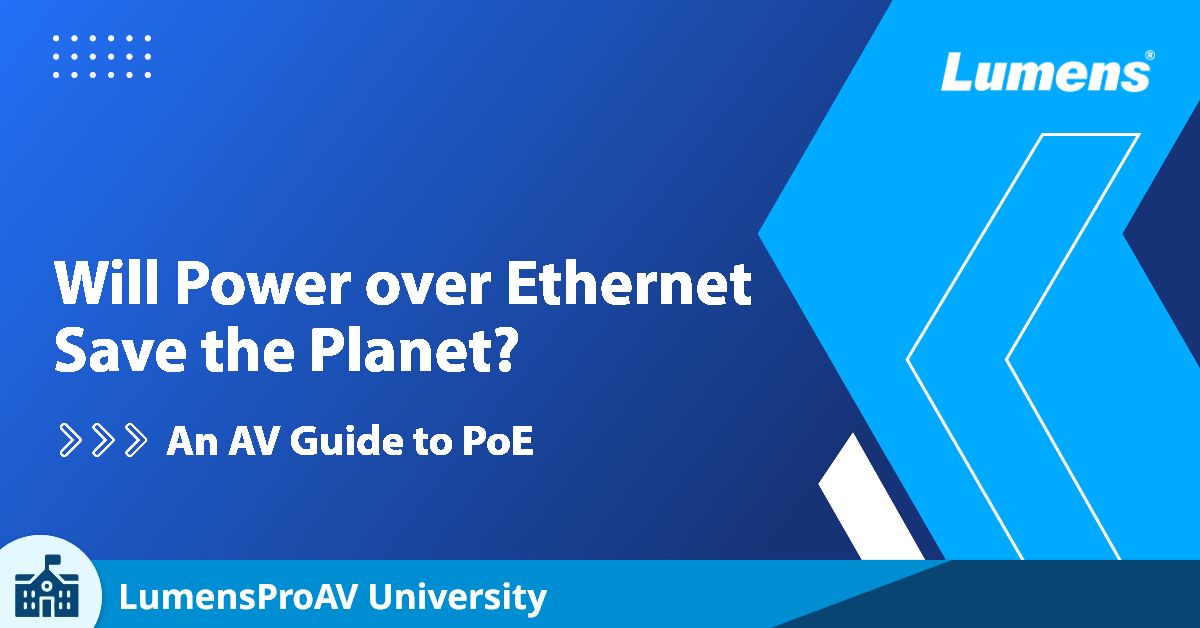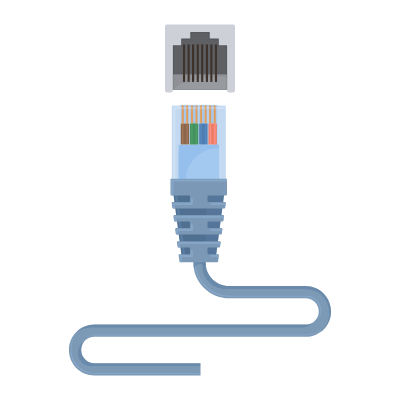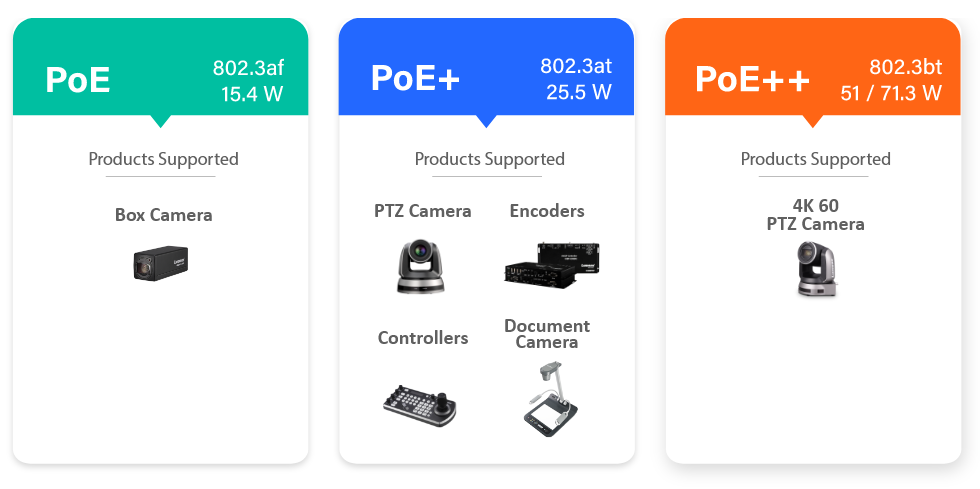【ProAV Lab】Will Power over Ethernet Save the Planet? An AV Guide to PoE
Written by Kieron Seth, Product Marketing Director at Lumens
February 16, 2022 44056

- A Virtual Reduction
- Can AV be more power efficient?
- What is PoE?
- What's the difference between PoE and PoE+?
- What's the difference between PoE+ and PoE++?
- What are the environmental benefits of PoE?
- How do we migrate to PoE?
A Virtual Reduction
When it comes to green credentials, AV ticks quite a few boxes. The rapid transition from events, travelling roadshows, conferences and physical meetings to webinars, unified communications and remote working has been powered almost entirely by audio visual technology. Video conferencing has played a pivotal role in keeping business, justice systems, social services, colleges and governments running. Although being green was not the primary motivation, organizations have become significantly less polluting as a direct result of greater adoption of AV.
Let's not be too self-congratulatory, though. AV is an engine of consumption, with digital retail signage installed in public and commercial spaces urging consumers to buy, to eat and to invest. Displays line the streets of city centres around the world, lighting up the night and tempting shoppers with endless adverts.
Nevertheless, advanced technology can play an important role in reducing the environmental impact of this kind of AV installation.
Can AV be more power efficient?
There are many opportunities for systems designers, AV technicians and project consultants to instigate a significant reduction in electrical usage. The most obvious approach is to specify lower consumption devices. There are also incremental steps to consider that can amount to an important energy saving, especially when assessed on a global scale. Key amongst these is PoE.
What is PoE?
 Power over Ethernet is a widely adopted technology, popular for doing away with the need for multiple power adapters and plug sockets. PoE simply transmits up-to 15.4W of DC power on each network port. Devices compliant with PoE (also known as IEEE 802.3af-2003) can take power directly from the local area network via a single Cat5 data cable. With PoE, there is a financial saving on projects of any size. Plus, kit installation is faster, and concealing a single cable is always easier.
Power over Ethernet is a widely adopted technology, popular for doing away with the need for multiple power adapters and plug sockets. PoE simply transmits up-to 15.4W of DC power on each network port. Devices compliant with PoE (also known as IEEE 802.3af-2003) can take power directly from the local area network via a single Cat5 data cable. With PoE, there is a financial saving on projects of any size. Plus, kit installation is faster, and concealing a single cable is always easier.
What’s the difference between PoE and PoE+?
The PoE+ standard (IEEE 802.3at-2009) provides up to 25.5W of power, compared with PoE's 15.4W. The arrival of PoE+ was a significant moment for AV manufacturers such as Lumens, who were now able to build network power into PTZ cameras, encoders, decoders, controllers, and document cameras.
What’s the difference between PoE+ and PoE++?
The IEEE 802.3bt-2018 PoE++ standard increases the wattage further compared with PoE+. The new standard introduced two additional power types: up to 51W and up-to 71.3W power delivery. While the majority of, for example, cameras can be powered by a 25.5W supply or less, certain devices, such as the VC-A71P PTZ camera that incorporate electrical motors and multi-stream processing demand the higher wattage supplied by PoE++.

What are the environmental benefits of PoE?
Remote Power
Centralizing and automating the power settings of AV devices can deliver serious power savings. While users will forget to turn off equipment manually, PoE connected kit can be shut down remotely. Making the installation more intelligent in this way is an instant route to energy savings. Although some legacy equipment can be programmed to go into low power mode after a period of inactivity, or to power off according to a routine weekly schedule, this often requires (fiddly) management at the device level and manual over-ride during extended holiday downtimes. Being fully controllable, PoE is a very efficient electricity network.
Sustainable Installation
One of the other major benefits of PoE is in the reduction of dedicated power lines and the requirement for fewer sockets around a building or facility. Reducing the need for electricians, eliminating the requirement for power adapters, and cutting down on the cost of the electrical infrastructure have immediate environmental benefits, measurably limiting the environmental impact of an installation.
How do we migrate to PoE?
There are clear environmental, financial and administrative benefits to PoE. Installing PoE is simple, the technology is reliable, and it is safe. Legacy networks can be upgraded using PoE injectors, while new PoE-ready switches are readily available from manufacturers such as NETGEAR.
